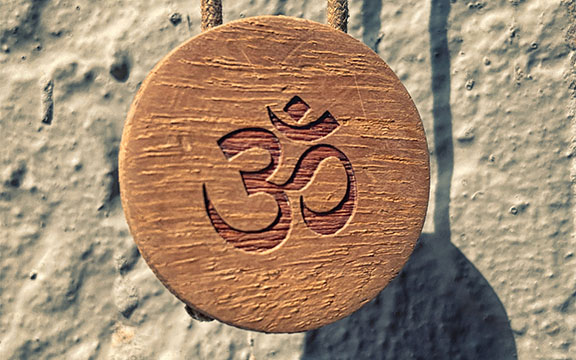
Photo by Rohan Reddy on Unsplash
In any Sanskrit mantra, one of the letters will be a sound that is considered a “seed” sound or a bija. The various bijas each have a different effect on our bodies and minds, and even on plant life. Mantra Shastra, is the science of sound. In Yoga, we have the practice known as Japa Yoga, the Yoga of the repetition of bijas and mantras. There are scientific principles behind sound. The well- known biblical phrase, “In the beginning, there was the Word” means that in the beginning there was sound. The first manifestation of the Unmanifested One, or God, is sound. The Hindus call it Pranava, or OM.
OM is an expression of the bija sound, hum. The Cosmic Vibration is like a generator—when it is static, just sitting quietly, you don’t hear anything. When it begins to rotate you hear the hum. When there is a hum, the energy is being produced. Each one of us is a dynamo, a generator of energy. We constantly hum, but often we don’t hear our own hum. This is because we are so interested in hearing all the other hums around us that we don’t take the time to be silent and listen to the hum that is always within us. That hum is the inner voice, the voice of antaratma, or the “I Am”—it is the real you, the expression of your True Self.
The hum means Self, in the Hindi language. Hum stands for the individual; it’s a derivation of the Sanskrit aham. We all vibrate and this hum is nothing less than a part of the cosmic hum or cosmic sound. If we could recognize that hum within and communicate with everything and everybody in the same way, we would experience everything in this world as beautiful.
Everything is sound. Everything was created with sound, but when the sound gets disturbed by our own restless mind, it is no longer a beautiful sound, thus we cannot see a peaceful world, or a sound world. So, we should bring that sound back to its natural rhythm. This is one way of approaching Yoga through Mantra Shastra. Every word has its form, its color, and has its effect on the universe. By regulating our thoughts, we can regulate our inner sound, and then we can communicate with the Cosmic Sound.
When we talk about Yoga, we are talking about tuning ourselves to the Cosmic Sound or the Cosmic Consciousness. There are so many different terms for having the experience of the realization of who we really are. But a simple term, that everyone can relate to is happiness. Is there anyone in this entire world who doesn’t want happiness? Happiness—unconditional and permanent happiness—is our common goal. We should never fall into dividing people based upon their approach to this ultimate goal and the ultimate Truth.
Once I was talking to a Cardinal at the Vatican in Rome. He was asking me about the idea of “Truth is One, Paths are Many.” He couldn’t understand this and said that we seem to be mixing everything up. I asked him, “How many roads are there leading up to this city?” He said, “Oh there are very many.” I replied, “Yes, there are many and do they not all lead to Rome?” He chuckled and said that now he understood.
So whatever mantra or bija or prayer appeals to you, remember: Tastes, temperaments, and capacities will naturally differ. Experiencing your True Self can be approached through any mantra, through any holy name, and any divine form. The essential point is to communicate with the Cosmic Sound, the Cosmic Consciousness, and recognize this as your own True Nature.


